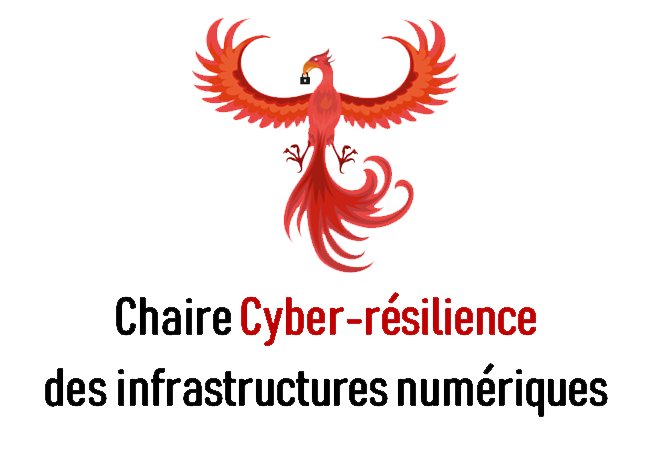| 1-IA and cyber security |
P1 |
76 |
João Vitorino, Miguel Silva, Eva Maia and Isabel Praça |
An Adversarial Robustness Benchmark for Enterprise Network Intrusion Detection |
| P2 |
42 |
Sadaf Md Halim, Md Delwar Hossain, Latifur Khan, Anoop Singhal, Hiroyuki Inoue, Hideya Ochiai, Kevin W. Hamlen and Youki Kadobayashi |
Securing Smart Vehicles through Federated Learning |
| P3 |
18 |
Daniel Fentham, David Parker and Mark Ryan |
Using Reed-Muller Codes for Classification with Rejection and Recovery |
| P4 |
51 |
Victor Aurora, Christopher Neal, Alexandre Proulx, Nora Boulahia-Cuppens and Frédéric Cuppens |
Unsupervised Clustering of Honeypot Attacks by Deep HTTP Packet Inspection |
| 2-Security Analysis |
P5 |
6 |
Mohamed Mekkouri and Christine Hennebert |
Practices for Assessing the Security Level of Solidity Smart Contracts |
| P6 |
25 |
Ruturaj Kiran Vaidya and Prasad Kulkarni |
Effectiveness of Binary-Level CFI Techniques |
| P7 |
79 |
Maxwel Bar-On, Bruhadeshwar Bezawada, Indrakshi Ray and Indrajit Ray |
A Small World –Privacy Preserving IoT Device-type Fingerprinting with Small Datasets |
| P8 |
55 |
Pierre-Victor Besson, Valérie Viet Triem Tong, Gilles Guette, Guillaume Piolle and Erwan Abgrall |
URSID: Automatically Refining a Single Attack Scenario into Multiple Cyber Range Architectures |
| 3-Phishing & Social Network |
P9 |
17 |
Yukiko Sawaya, Ayane Sano, Takamasa Isohara, Akira Yamada and Ayako Komatsu |
Does the Anchoring Effect Influence Individuals’ Anti-Phishing Behavior? |
| P10 |
44 |
Eric Dzeha and Guy-Vincent Jourdan |
IntelliTweet: a Multifaceted Feature Approach to Detect Malicious Tweets |
| P11 |
26 |
Emad Badawi, Guy-Vincent Jourdan and Iosif-Viorel Onut |
Web Scams Detection System |
| 4-Vulnerabilities, Exploits, and Threats |
P12 |
8 |
Mahmoud Zamani, Saquib Irtiza, Latifur Khan and Kevin Hamlen |
VulMAE: Graph Masked Autoencoders for Vulnerability Detection from Source and Binary Codes |
| P13 |
2 |
Raphael Khoury, Bolduc Jérémy, Jason Lafrenière and Abdel-Gany Junior Odedele |
Analysis of Cryptographic CVEs: Lessons Learned and Perspectives |
| P14 |
24 |
Mohamed El Amine Bekhouche and Kamel Adi |
A BERT-Based Framework for Automated Extraction of Indicators of Compromise from Security Incident Reports. |
| P15 |
74 |
Norah Ridley, Enrico Branca, Jadyn Kimber and Natalia Stakhanova |
Enhancing Code Security Through Open-source Large Language Models: A Comparative Study |
| P16 |
66 |
Seyed Behnam Andarzian, Cristian Daniele and Erik Poll |
Green-Fuzz: Efficient Fuzzing for Network Protocol Implementations |
| P17 |
71 |
Farnood Faghihi, Mohammad Zulkernine and Steven Ding |
Unmasking of Maskware: Detection and Prevention of Next-Generation Mobile Crypto-Ransomware |
| P18 |
52 |
Pierre Crochelet, Christopher Neal, Nora Boulahia-Cuppens, Frédéric Cuppens and Alexandre Proulx |
Automated Attacker Behaviour Classification Using Threat Intelligence Insights |
| P19 |
61 |
Wassim Koribeche, David Espes and Cédric Morin |
UDP state manipulation: description of a Packet Filtering vulnerability in Stateful firewalls |
| 5- Malware Analysis |
P20 |
16 |
Julien Cassagne, Ettore Merlo, Guy-Vincent Jourdan and Iosif Viorel Onut |
Following the Obfuscation Trail: Identifying and Exploiting Obfuscation Signatures in Malicious Code |
| P21 |
29 |
Charles-Henry Bertand Van Ouytsel, Christophe Crochet, Axel Legay and Serena Lucca |
On Exploiting Symbolic Execution to Improve the Analysis of RAT Samples with angr |
| P22 |
46 |
Thanh-Hung Pham and Mizuhito Ogawa |
Original Entry Point detection based on graph similarity |
| P23 |
59 |
Martin Brisfors, Michail Moraitis, Gabriel Klasson Landin and Truls Jilborg |
Attacking and Securing the Clock Randomization and Duplication Side-Channel Attack Countermeasure |
| 7-Security Design |
P24 |
22 |
John Breton, Jason Jaskolka and George O. M. Yee |
Hardening Systems Against Data Corruption Attacks at Design Time |
| P25 |
37 |
Ludovic Paillat, Claudia-Lavinia Ignat, Davide Frey, Mathieu Turuani and Amine Ismail |
Design of an Efficient Distributed Delivery Service for Group Key Agreement Protocols |
| P26 |
20 |
Ruize Wang and Elena Dubrova |
A shared key recovery attack on a masked implementation of CRYSTALS-Kyber’s encapsulation algorithm |
| P27 |
30 |
Sayan Biswas, Kangsoo Jung and Catuscia Palamidessi |
Tight Differential Privacy Guarantees for the Shuffle Model with k-Randomized Response |
| |
|
|
|
|
| |
|
|
|
|
| |
|
|
|
|
| Short paper 1 |
SP1 |
58 |
Denis Obrezkov and Karsten Sohr |
UCAT: the Uniform Categorization for Access Control |
| SP2 |
39 |
Markus Dahlmanns, Roman Matzutt, Chris Dax and Klaus Wehrle |
Collectively Enhancing IoT Security: A Privacy-Aware Crowd-Sourcing Approach |
| SP3 |
57 |
Jan Eske Gesell, Robin Buchta, Kilian Dangendorf, Pascal Franzke, Felix Heine and Carsten Kleiner |
Comparative Analysis of Reduction Methods on Provenance Graphs for APT Attack Detection |
| SP4 |
49 |
Mohammad Alnabhan and Paula Branco |
Evaluating Deep Learning for Cross-Domains Fake News Detection |
| Short paper 2 |
SP5 |
50 |
Boubakr Nour, Makan Pourzandi, Rushaan Kamran Qureshi and Mourad Debbabi |
Accurify: Automated New Testflows Generation for Attack Variants in Threat Hunting |
| SP6 |
27 |
Ryosuke Kobayashi and Rie Yamaguchi Shigetomi |
Trade-off between Authentication Performance and Detection Time for Zero-effort Attack in Location-based Authentication |
SP7 |
73 |
paper withdrawn |
paper withdrawn |
| SP8 |
21 |
Awaleh Houssein Meraneh, Fabien Autrel, Hélène Le Bouder and Marc Oliver Pahl |
SADIS: real-time sound-based anomaly detection for industrial systems |
| SP9 |
32 |
Valeria Valdés Ríos, Fatiha Zaidi, Ana Rosa Cavalli and Wissam Mallouli |
A resilience Component for a Digital Twin |







